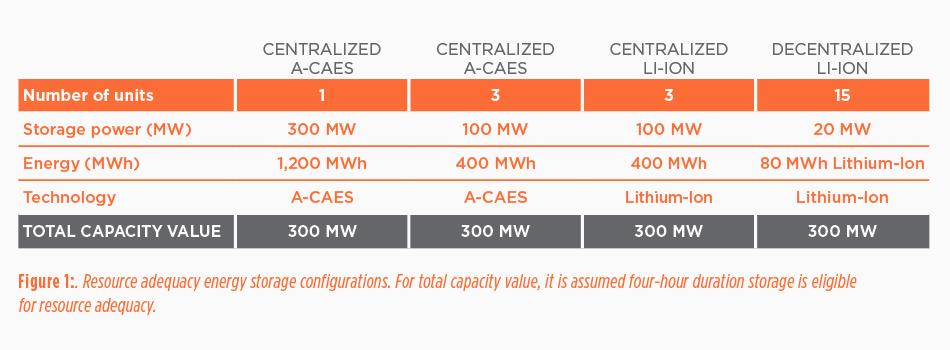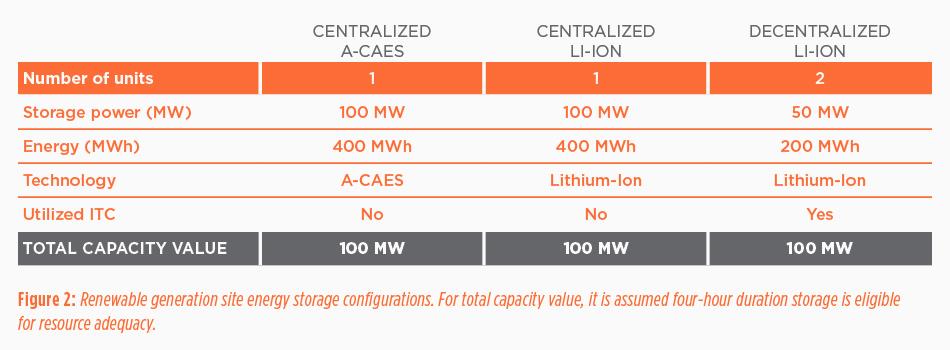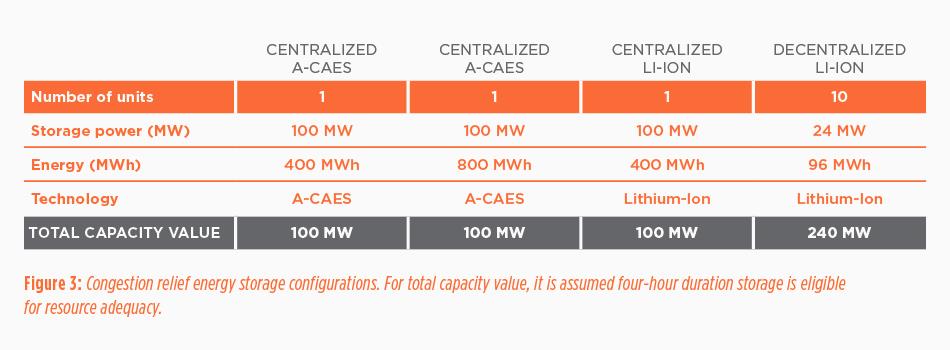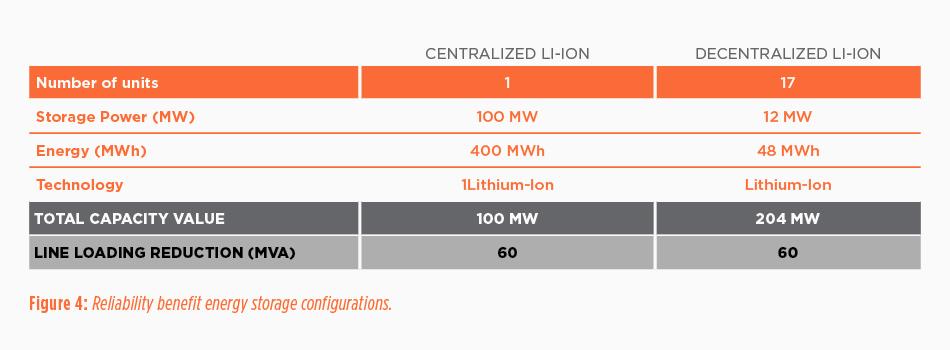
Until recently, the cost of energy storage usually outweighed its benefits. As the cost of batteries and other forms of energy storage comes down, more use cases can be justified economically. Now utilities and developers are carefully evaluating when it makes sense to invest and under what configuration, size and operational use case to do so.
Batteries at the utility scale can be sized according to a wide variety of performance considerations and location needs. This has some allure, but it also presents many possible deployment configurations to consider. Utilities need to carefully evaluate power or capacity, measured in megawatts (MW), and energy, measured in megawatt-hours (MWh), when developing a cost-effective energy storage project.
Read The White Paper

Until recently, the cost of energy storage usually outweighed its benefits. As the cost of batteries and other forms of energy storage comes down, more use cases can be justified economically. Now utilities and developers are carefully evaluating when it makes sense to invest and under what configuration, size and operational use case to do so.
Batteries at the utility scale can be sized according to a wide variety of performance considerations and location needs. This has some allure, but it also presents many possible deployment configurations to consider. Utilities need to carefully evaluate power or capacity, measured in megawatts (MW), and energy, measured in megawatt-hours (MWh), when developing a cost-effective energy storage project.
As the market to develop storage projects expands, utilities and developers must determine the most economical deployments and use cases to narrow their project development focus and improve their speed to market. One effective approach is to isolate potential use cases and compare the economic tradeoffs between deploying large-scale, centralized storage and small-scale, decentralized storage. Lithium-ion (Li-Ion) and Advanced Compressed Air Energy Storage (A-CAES) are useful technology comparisons; they cover a wide variety of storage applications and their economic feasibility varies based on the size and duration of the project. For context, A-CAES is an emerging energy storage technology.
Recently, 1898 & Co., part of Burns & McDonnell, utilized this approach to evaluate three scenarios where energy storage is commonly considered as a potential solution. Each scenario focused on one use case with broad application: resource adequacy (or capacity accreditation), improving resource adequacy at a renewable generation site, and transmission deferral. Our cost-benefit analysis uncovered clear guidance for utilities and developers considering energy storage.
Achieving Resource Adequacy
In Scenario 1, we considered four stand-alone energy storage configurations providing equivalent capacity benefits. This included larger-scale storage configurations centralized to a single or limited number of sites using A-CAES and Li-Ion technologies. A decentralized configuration with multiple sites using Li-Ion, as shown in Figure 1, was used. Each deployment configuration considered provides the same capacity benefit.
We compared the fixed costs (capital, and operations and maintenance) of each configuration, as well as potential revenues net of variable and charging costs. Revenues were derived based on the security constrained economic dispatch (SCED) market model and assumed a daily charge/discharge cycle. These figures were combined for each configuration and compared as an annualized net cost.
According to our analysis, the single site, centralized A-CAES configuration (300 MW/1,200 MWh) had the lowest net annual cost by some margin. Yet, using this configuration was approximately twice as expensive as a cost of new entry (CONE) value of approximately $250/MW-day. This CONE value is a conservative metric that effectively compares the energy storage configuration to a simple-cycle, or “peaker,” plant.
At a simplistic level, this shows that larger‑scale energy storage deployments are more cost‑effective than smaller‑scale deployments for the resource adequacy benefit alone. Even so, costs — net costs including incentives — must decline another 50% in order to be competitive with other (non-energy storage) resource adequacy alternatives.
Pairing Storage With Solar Generation
Scenario 2 was designed to build on Scenario 1 at a site that pairs storage with solar generation. As an intermittent energy resource penetrates a market, the ability for that resource to provide resource adequacy, or power during peak demand hours, diminishes. This is especially true for solar. Pairing energy storage with solar allows a utility to better match energy supply with energy demand during hours of peak resource adequacy need.
In addition, energy storage can be eligible for an investment tax credit (ITC) when all or a significant portion of its discharged energy comes from a renewable energy source. So, pairing storage with a solar facility can provide a tax credit advantage that stand-alone energy storage doesn’t currently receive. While the ITC for renewable projects is set to be reduced, this example is illustrative of potential future subsidies for energy storage.
In Scenario 2 we compared two stand-alone, centralized energy storage configurations with a decentralized energy storage configuration, as shown in Figure 2. The decentralized configuration was paired with a renewable energy source to make it eligible for an ITC. Each configuration provided the same amount of incremental capacity benefit.
Again, we compared the annualized net cost, including energy sales revenue, between each of the energy storage configurations. For the decentralized configuration, we also compared the net cost when realizing the full benefit of the ITC with the net cost without the tax credit. Without the benefit of an ITC, the larger, centralized storage configuration appears to be the most cost-effective solution. But, because the smaller, decentralized solution can take advantage of the 30% ITC when paired with a renewable source, it becomes a more cost-effective choice.
Even with the ITC, the cost of energy storage paired with intermittent resources is significant. This is especially true when you compare the cost per MWh of production to other conventional and renewable energy sources. On a pure dollars-per-megawatt-hour comparison, the cost of pairing solar and battery storage may be six to seven times more expensive than stand-alone solar. However, the size and duration of storage paired with solar may be reduced if the developer or owner of a solar-plus-storage asset is willing to accept some uncertainty regarding the asset’s ability to discharge storage at the peak hour.
Finally, battery storage has the potential to increase overall renewable capacity by making renewable power — which is inherently limited by environmental conditions such as sunlight and wind speed — available more hours per day. Battery storage can make renewable power available during hours most critical to overall grid reliability. This additional capacity might help offset the cost of storage when compared to other alternatives.
Optimizing Transmission Assets
In Scenario 3, we considered two potential transmission deferral benefits energy storage can provide: congestion relief and avoided reliability upgrade costs.
Organized transmission markets such as MISO and PJM seek to dispatch the lowest production cost resources to meet demand in all hours. Congestion, like rush-hour traffic on a busy highway, can occur when a transmission facility is at its rating limit. During congestion, the market must redispatch more expensive generation resources to reliably operate the system.
Congestion on transmission facilities can rapidly accrue a large annual expense. This expense, which is paid by energy consumers, can be avoided through investment in new transmission facilities to alleviate congestion. New transmission projects are built if the benefit in reduced congestion exceeds the cost associated with the new transmission investment. Energy storage projects, when placed in the appropriate location and operated in order to reduce system congestion, can provide congestion relief similar to a new transmission facility.
Relieving Congestion
To compare congestion relief, we evaluated four different energy storage configurations of varying technology, energy (or duration) capability and deployment size, as shown in Figure 3. The congested facility we studied was identified during MISO’s annual regional transmission planning process, known as MISO Transmission Expansion Planning (MTEP). Each configuration was developed with an equivalent ability to relieve loading on the congested facility.
Though we looked at the annualized net cost including revenues from energy sales, the primary comparison in terms of effectiveness was congestion relief as calculated through SCED simulations. Our analysis found that the large-scale energy storage configurations provided more congestion relief than the decentralized, small-scale configuration. Of these, the longer-duration energy provided through the A-CAES technology performed best. Smaller scale, decentralized storage at lower distribution levels required many more units to provide equivalent congestion relief.
In this study, the congested facility was a 345-kV transmission line. If congestion relief were targeted on lower-voltage facilities, fewer decentralized storage deployments would be necessary and decentralized storage might be more cost competitive.
The specific drivers causing congestion at transmission facilities vary. Regardless, charge/discharge operation and round-trip efficiency are important factors when it comes to maximizing congestion relief through an energy storage project. Based on the study parameters, A-CAES has much lower round-trip efficiency than lithium-ion technology, but it is more cost-effective when providing longer duration storage.
Avoiding Reliability Upgrades
When the reliability of aging infrastructure is in question, or that infrastructure is pushed to the point of overloading due to outage conditions, utilities need to evaluate additional investment in the transmission and distribution system in order to maintain a similar level of system reliability. That investment may take the form of rebuilding a failing or overloaded line. Or, it may involve putting in energy storage or other forms of distributed generation.
We evaluated two storage configurations that could provide benefits similar to a new 138-kV transmission build. As shown in Figure 4, the centralized and decentralized storage configurations provided equivalent loading reduction (60 MVA) to the overloaded facility.
Once again, we compared the net annualized cost including revenues gained during economic system dispatch; however, we did not allow the energy storage projects to dispatch during system conditions that would require the storage system’s availability for system reliability.
When we compared cost to revenue, the centralized solution was again the best choice. The amount of battery power capability it provided was much more targeted. This proved more effective at relieving the overloaded facility than spreading out storage facilities at multiple sites near the overloaded facility.
Using MISO exploratory per-mile costs, we estimated the cost of building a new 138-kV transmission facility. This estimated cost can serve as the avoided cost-benefit number associated with building the energy storage project instead of the transmission upgrade project. Comparing this avoided cost-benefit figure to the cost of the proposed solutions indicates that the cost of rebuilding the line would equal approximately 90% of the cost of implementing the centralized battery solution identified in our analysis.
In other words, the difference between the cost of the traditional transmission upgrade approach and the battery solution, sometimes called a non-wires alternative, is minimal. As such, this use case represents the most competitive cost for energy storage relative to traditional solutions at today’s assumed energy storage pricing.
Conclusion
As shown in our analysis and in the policy-driven projects announced to date, energy storage is not yet economically justified in all cases. Under the benefit scenarios we studied, a centralized storage configuration was shown to be more cost‑effective than a decentralized configuration when pursuing resource adequacy requirements. But, if capacity is the only goal, it currently doesn’t make financial sense to build energy storage instead of other available alternatives.
Energy storage becomes more economically feasible when used in combination with renewable power generation, particularly when the ITC can be applied. However, the cost‑effectiveness of any storage configuration is dependent on the precise specifications of available tax credits. If the ITC were to change — for example, if it was extended to standalone energy storage or eliminated altogether — utilities and developers might make different investment decisions. A full accounting of the cost of battery storage also requires detailed analysis of the incremental renewable capacity provided by that storage.
When making the case for battery investment under today’s assumed costs, the most viable economic argument centers on using it to replace, rather than rebuild, aging transmission and distribution infrastructure. As the price of technologies like Li-ion batteries continues to decrease, investment in energy storage will become attractive in a wider variety of use cases.









